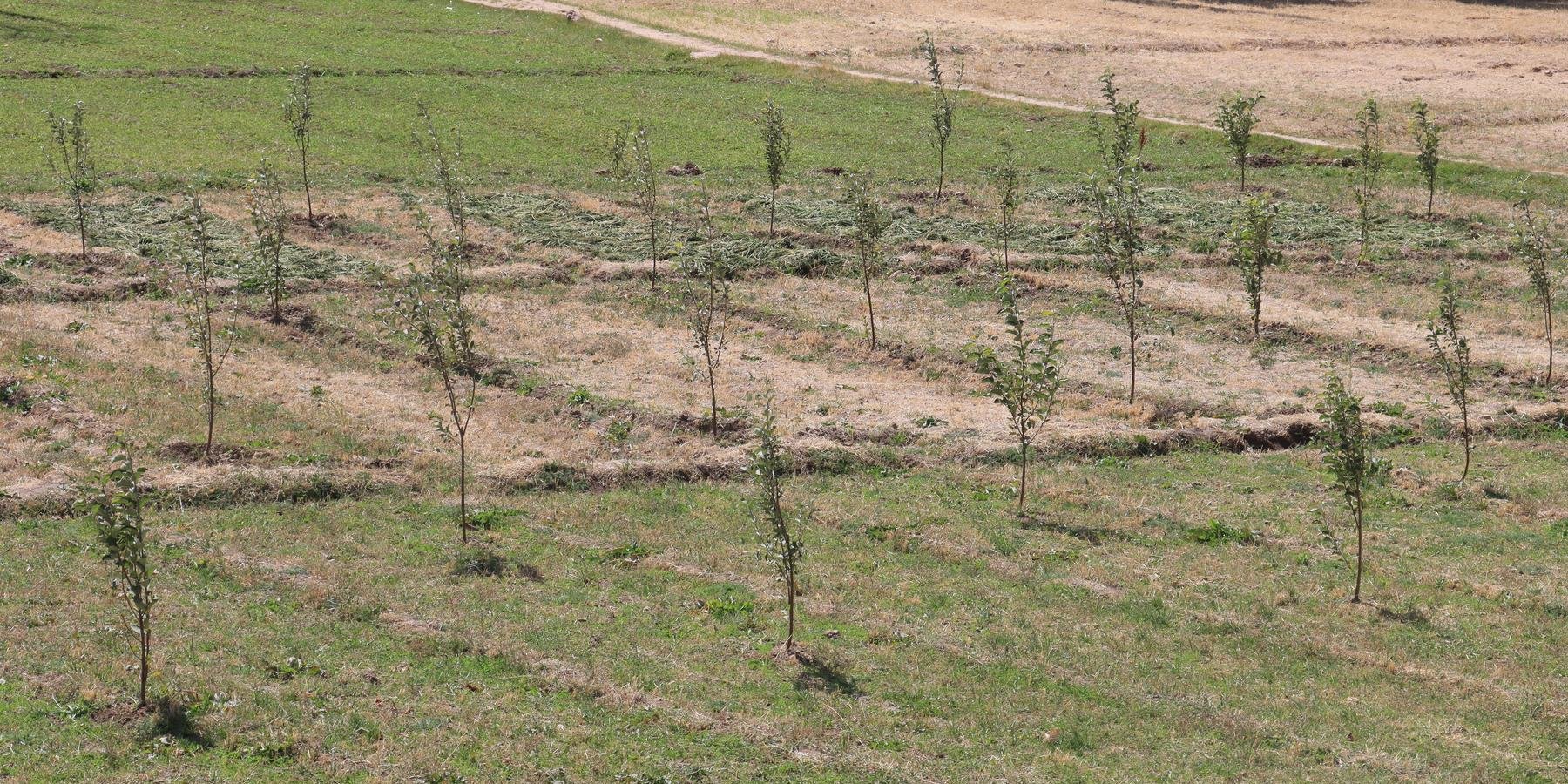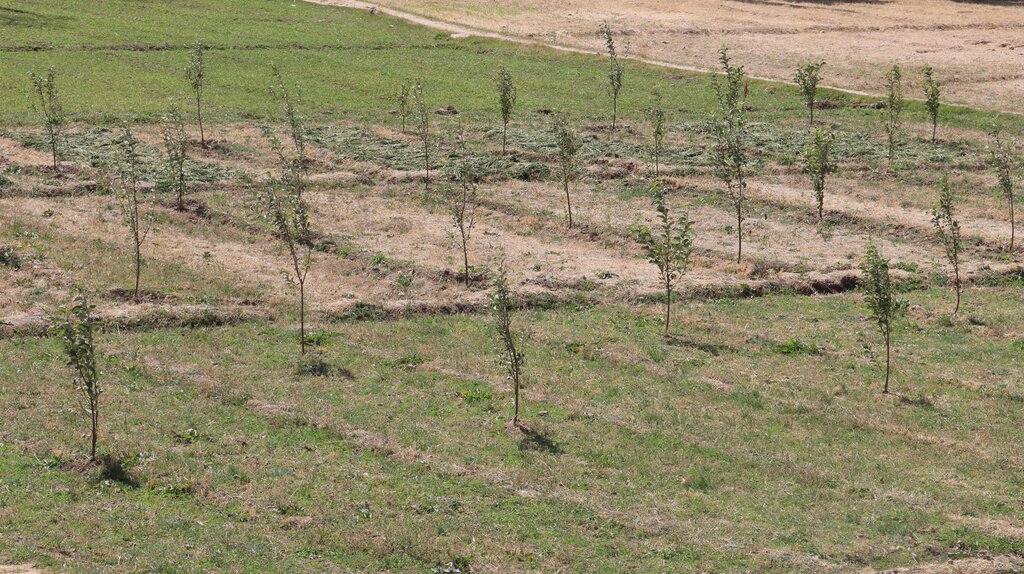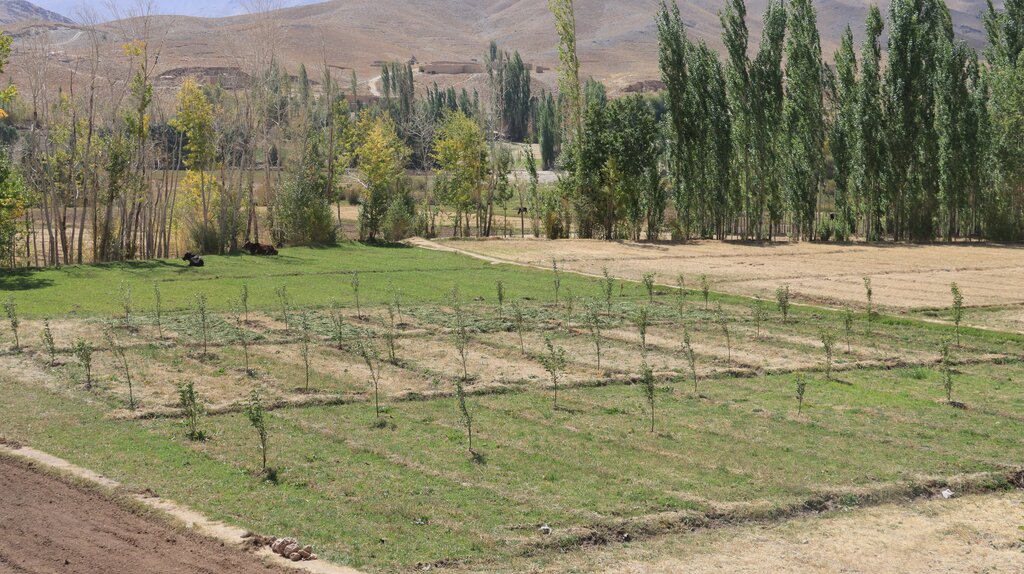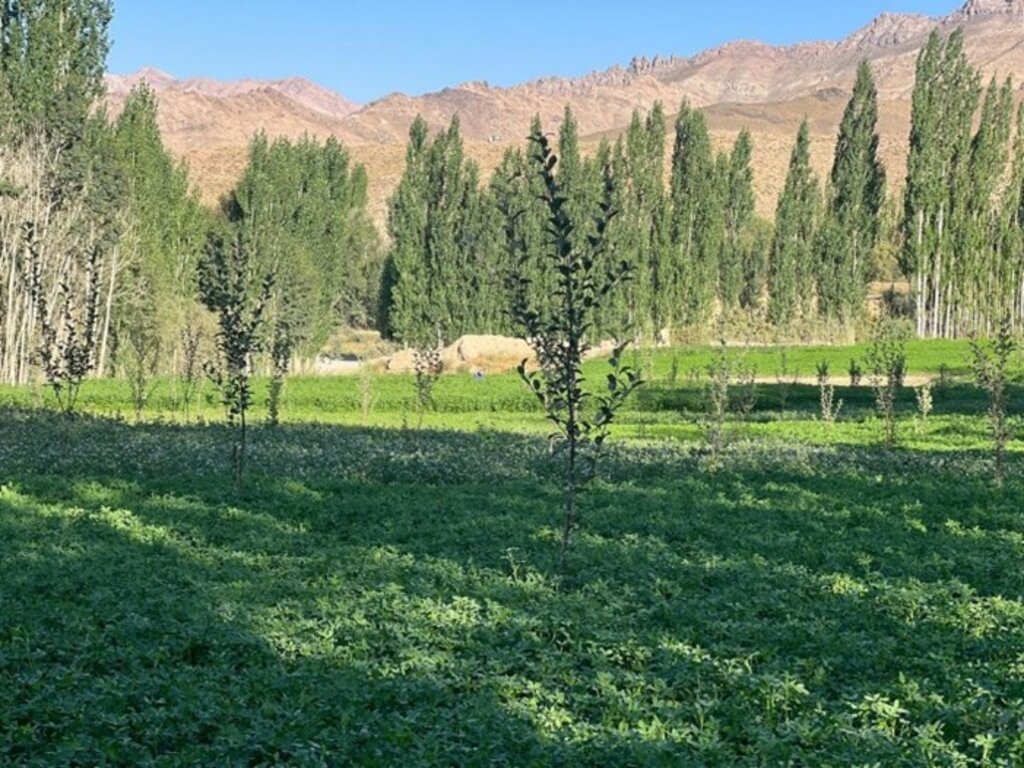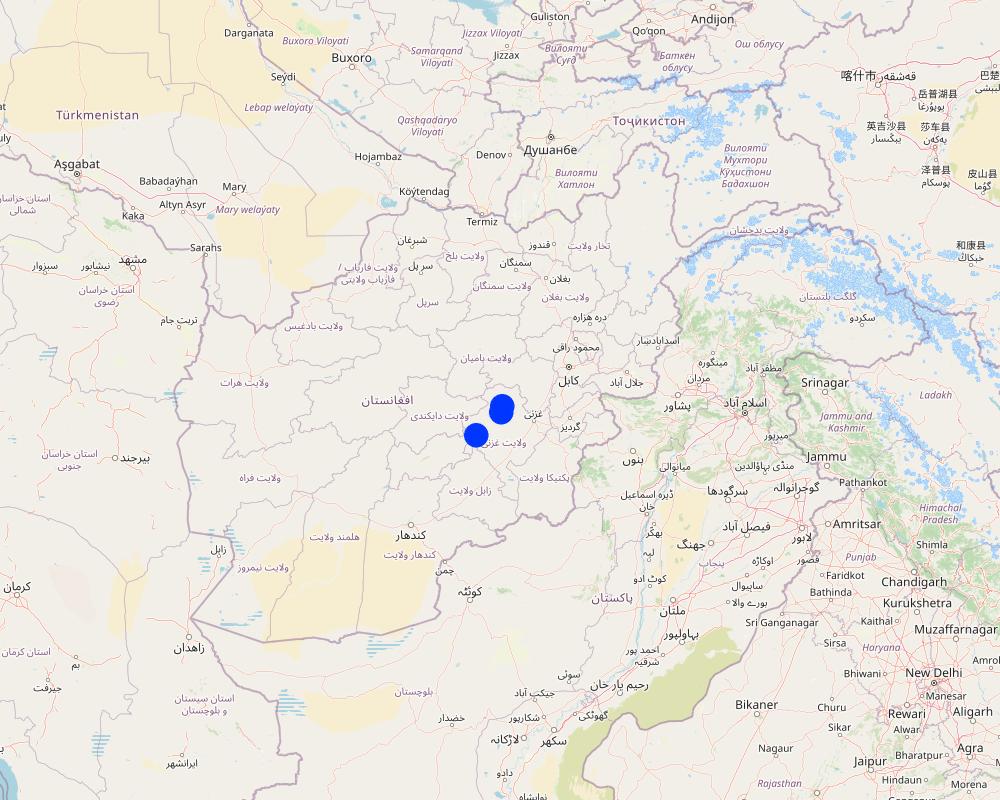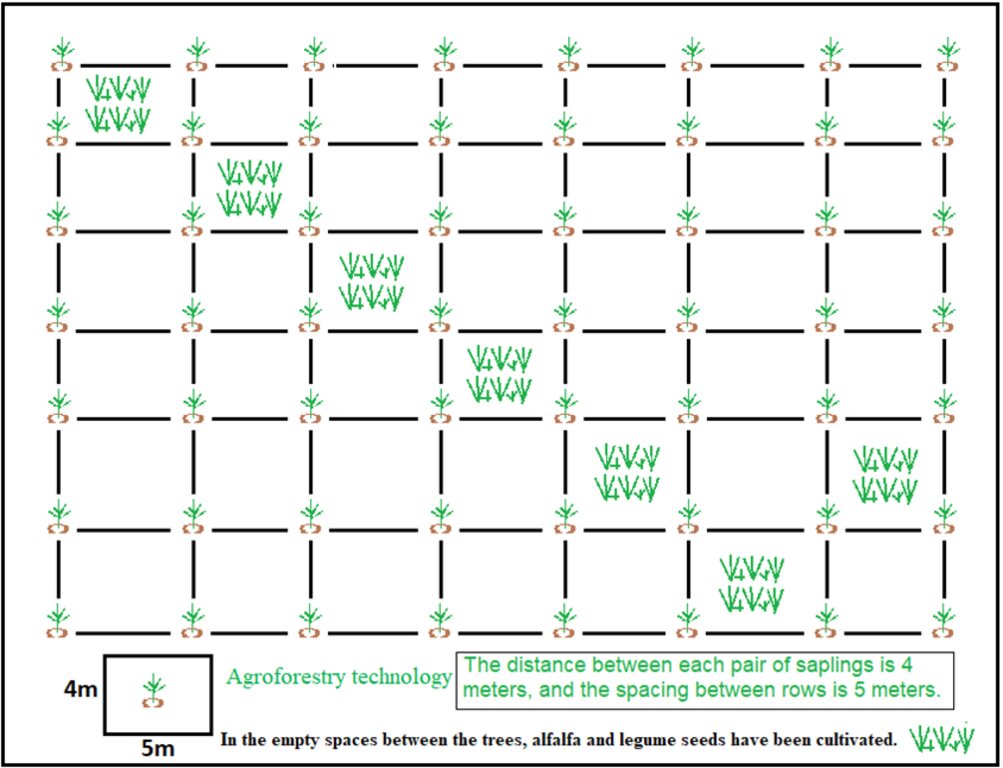Agroforestry to improve soil fertility, water retention, and sustainable income for local communities [Афганистан]
- Создание:
- Обновить:
- Составитель: Ahmad Zia Jalalzai
- Редакторы: Mohammad Amin Nesar, Megha bajaj, Mir Wali Khan Lakanwal
- Рецензенты: Rima Mekdaschi Studer, Illias Animon, Muhammad Ishaq Safi
د خاورې د خاصلخيزۍ ودې، اوبو ذخيره کولو او محلي ټولنو له پاره د دوامداره عايد په موخه د کرنيزې ځنګلدارۍ قطعو جوړول /ایجاد پلات زراعت جنگلی برای بهبود سلامت خاک، نگهداری آب و تأمین درآمد پایدار برای جوامع محلی
technologies_7443 - Афганистан
Просмотреть разделы
Развернуть все Свернуть все1. Общая информация
1.2 Контактные данные специалистов и организаций, участвующих в описании и оценке Технологии
Специалист по УЗП:
Специалист по УЗП:
Andar Ahmadullah
FAO Afghanistan
Афганистан
землепользователь:
Mohammad Haider
Ghaibi Rangeland Management Association (RMA)
Афганистан
землепользователь:
Ghullam Sakhi
Qarcha Rangeland Management Association (RMA)
Афганистан
Название проекта, содействовавшего документированию/оценке Технологии (если применимо)
Community-based sustainable land and forest management in AfghanistanНазвание организации (-ий), содействовавших документированию/оценке Технологии (если применимо)
FAO Afghanistan (FAO Afghanistan) - Афганистан1.3 Условия, регламентирующие использование данных, собранных ВОКАТ
Составитель и ответственный(-ые) специалист(-ы) согласны с условиями, регламентирующими использование собранных ВОКАТ данных:
Да
1.4 Декларация по устойчивости описываемой Технологии
Вызывает ли описанная здесь Технология проблемы деградации земель настолько, что ее нельзя назвать природосберегающей?
Нет
Пояснения:
This technology is applied with a focus on land restoration and conservation and is not problamatic with regard to land degradation.
2. Описание Технологии УЗП
2.1 Краткое описание Технологии
Определение Технологии:
The Agroforestry system in Malistan district combines traditional practices with support from the Community-Based Sustainable Land and Forest Management project in Afghanistan. This initiative provides technical support, training, and resources like apple trees, fertilizers, and alfalfa seeds to establish 400 orchards (1,000 m² each). The goal is to enhance community livelihoods by reducing dependence on rangelands, helping to preserve local ecosystems.
2.2 Подробное описание Технологии
Описание:
The agroforestry system adopted in the mountainous districts of Ghazni province, particularly in Navor and Malistan district is an innovative approach that is transforming the way local farmers cultivate their land. This system integrates agricultural crops, tree cultivation, and livestock farming to maximize land productivity while promoting environmental sustainability. At the heart of the system are apple orchards, alfalfa seeds, and fertilizers, which work together to enhance food security, provide livestock feed, and improve soil fertility. Supported by modern agricultural techniques, the project includes a total of 400 orchards, each covering 1,000 square meters, helping to alleviate pressure on overgrazed rangelands while improving local livelihoods.
This agroforestry method is particularly well-suited to Ghazni’s rugged terrain, where farming communities rely heavily on livestock and rangelands for sustenance. However, the region’s dry climate, frequent overgrazing, and ongoing land degradation have made traditional farming increasingly unsustainable. By introducing apple trees and alfalfa cultivation, farmers now have an alternative source of income and animal feed while actively restoring degraded lands. Alfalfa serves as a nutrient-rich fodder for livestock, and in return, livestock manure is used as fertilizer, creating a self-sustaining agricultural cycle that enhances soil health.
Beyond its environmental benefits, this system plays a crucial role in improving livelihoods. By diversifying agricultural production, it enhances food security and generates additional income for local farmers. More importantly, it helps alleviate the burden on fragile rangelands by offering an alternative source of livestock feed, reducing overgrazing and preventing further land degradation. Through natural nutrient recycling, alfalfa provides essential fodder for livestock, while their manure replenishes soil nutrients, ensuring long-term soil fertility.
To successfully implement and maintain this system, several key activities and inputs are required. Local farmers receive specialized training and technical support to equip them with the necessary skills. Essential supplies, including apple saplings, fertilizers, and alfalfa seeds, are provided to help establish the orchards. Additionally, proper maintenance, such as irrigation, pruning, and weed control, ensures that the orchards remain productive. Soil and water conservation efforts, such as constructing contour banks and water diversion structures, further safeguard the land against erosion and water loss.
The impact of this technology extends far beyond the fields. Environmentally, it significantly reduces soil erosion, improves water retention, and restores soil health. Economically, it increases household income by boosting apple production and generating sales from alfalfa as livestock feed. Socially, it strengthens community resilience by offering a reliable source of food and income, while encouraging the adoption of sustainable farming practices.
While many farmers appreciate the system for its cost-effectiveness, sustainability, and diverse benefits, some challenges remain. Because of the duration for fruit production of apple trees are typically taking three to four years to bear fruit, patience and long-term planning is crucial. Additionally, the dry climate means that farmers must invest extra time and effort in irrigation, especially during drought periods, to ensure optimal growth and fruit yield. Despite these challenges, the agroforestry system in Malistan and Navor presents a promising solution for sustainable land management and rural development.
2.3 Фотографии, иллюстрирующие Технологию
2.4 Видеоматериалы, иллюстрирующие Технологию
Комментарий, краткое описание:
Artificial reseeding plays a vital role in the restoration of degraded rangeland ecosystems. Reseeding of local palatable fodder species in degraded rangeland is a restoration technique aimed at reintroducing native plants that support soil health and local biodiversity. This process enhances forage availability for grazing animals, stabilizes soil, and helps combat desertification by promoting sustainable vegetation cover. By using palatable, locally adapted species, artificial reseeding improves the health and productivity of degraded rangeland ecosystem.
Дата:
20 october 2023
Место:
Malistan district Mokly village.
Автор съемки:
Ahmad Zia Jalalzai
2.5 Страна/ регион/ места, где применяется Технология, информация о которых собрана в данной Анкете
Страна:
Афганистан
Административная единица (Район/Область):
Southeastern Ghazni province
Более точная привязка места:
The technology is applied in 44 villages through 7 Rangeland Management Associations (RMAs). Hemat and Faqir are sample villages reflected in the map.
Охарактеризуйте пространственное распространение Технологии :
- примененяется точечно/ на небольших участках
Технология применяется на ООПТ?
Нет
Пояснения:
This project established 400 agroforestry plots (for 400 land users); the coordinates represent the samples locations for 400 orchards.
Map
×2.6 Сколько лет применяется данная Технология
Год начала реализации:
2022
2.7 Внедрение Технологии
Укажите, как именно Технология УЗП была внедрена:
- через проекты/ внешнее вмешательство
Пояснения (тип проекта и т.д.):
The agroforestry system was introduced as an innovative, community-driven approach, offering an environmentally friendly alternative. This initiative was developed in response to the community's call for sustainable solutions that enhance livelihoods while preserving natural resources.
The agroforestry system integrates apple tree plantation with alfalfa intercropping, enhancing land productivity and sustainability by providing both fruit and forage. This technology improves livelihoods and promotes soil fertility and moisture retention for long-term environmental benefits
3. Классификация Технологии УЗП
3.1 Основные цели и задачи реализации Технологии
- повышение производства
- снижение или предотвращение деградации земель, восстановление нарушенных земель
- смягчение последствий изменения климата
- создание благоприятных экономических условий
- создание благоприятных социальных условий
3.2 Текущий(-ие) тип(-ы) землепользования на территории, где применяется Технология
Комбинированное землепользование в пределах одной и той же земельной единицы:
Да
Укажите сочетания типов землепользования (посевы / пастбища / деревья):
- Агро-пастбищное хозяйство ( включая растениеводство-животноводство)
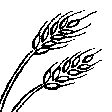
Пахотные угодья и плантации
- Многолетние (недревесные) культуры
Многолетние (недревесные) культуры - Уточните культуры:
- цветочные культуры - многолетние
Число урожаев за год:
- 2
Поясните:
summer and fall season
Применяются ли посевы в междурядьях?
Да
Если да, укажите, какие посевы применяются:
Alfaalfa is mainly used for intercropping
Применяется ли севооборот?
Нет

Пастбищные угодья
Интенсивный выпас/ выращивание кормов:
- Стойловое содержание/ нулевой выпас
Вид животных:
- cattle - dairy and beef (e.g. zebu)
Используется ли комплексное земледельческо-животноводческое хозяйство?
Да
Если да, укажите:
Animal manure is added in the fall season
Продукты и услуги:
- economic security, investment prestige
Виды:
cattle - dairy and beef (e.g. zebu)
Счет:
1345
Пояснения:
In autumn, people in the community graze their land with animals like cattle, sheep and goats. To manage and control the grazing, they use stakes and ropes to fence a specific area of land and ensure that the saplings are not damaged.
Planting of fruit trees helps to reduce pressure on rangeland grasses and shrubs to support landscape restoration.
Most land users plant apple trees and alfalfa. Some land users, who do not have animals, cultivate legumes instead of alfalfa.
3.3 Изменилось ли использование земель в связи с внедрением Технологии?
Изменилось ли использование земель в связи с внедрением Технологии?
- Да (Пожалуйста, заполните нижеприведенные вопросы относительно использования земель до внедрения Технологии)
Комбинированное землепользование в пределах одной и той же земельной единицы:
Да
Укажите сочетания типов землепользования (посевы / пастбища / деревья):
- Агро-пастбищное хозяйство ( включая растениеводство-животноводство)

Пахотные угодья и плантации
- Многолетние (недревесные) культуры
Многолетние (недревесные) культуры - Уточните культуры:
- цветочные культуры - многолетние
Применяются ли посевы в междурядьях?
Да
Если да, укажите, какие посевы применяются:
Earlier, wheat was planted only on the cropland and the only grazing land that was overgrazed and it became degraded. Now there is a mixed system agro-pastoralism in place due to the application of the technology.
Применяется ли севооборот?
Нет

Пастбищные угодья
Интенсивный выпас/ выращивание кормов:
- Стойловое содержание/ нулевой выпас
Вид животных:
- cattle - dairy and beef (e.g. zebu)
Используется ли комплексное земледельческо-животноводческое хозяйство?
Нет
Пояснения:
Most land users plant apple trees and alfalfa seeds. Some land users, who do not have animals, cultivate legume intercropping instead of alfalfa.
3.4 Водоснабжение
Обеспеченность водой участков, где реализуется Технология :
- сочетание богарных и орошаемых земель
Пояснения:
Out of the 400 agroforestry plots, some have full water availability, while others have 80% water availability. About 10% of the agroforestry plots receive only 40% to 60% of the required water. The saplings are mainly irrigated by spring rainfall. In a few plots, additional irrigation is provided two to three times during the warm season by transporting water from the canal using animals.
3.5 Категория УЗП, к которой относится Технология
- Кочевое животноводство и пастбищное хозяйство
- Комлексное земледельческо-животноводческое хозяйство
- Комплексное управление почвенным плодородием
3.6 Мероприятия УЗП, выполняемые в рамках Технологии
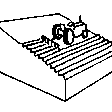
Агрономические мероприятия
- A2: Органическое вещество/ почвенное плодородие
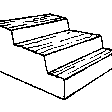
инженерные мероприятия
- И2: Насыпи, валы

управленческие мероприятия
- У6: Управление отходами (переработка, вторичное использование, снижение количества отходов)
Пояснения:
Residue management of trees is used for fuel, and alfalfa is utilized as livestock fodder in winter.
3.7 Основные проблемы деградации земель, на решение которых направлена Технология
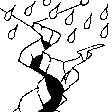
водная эрозия почв
- ВЭп: поверхностная эрозия/смыв верхних почвенных горизонтов

ветровая эрозия почв
- Эп: утрата плодородного слоя почвы

ухудшение химических свойств почв
- Хп: Снижение плодородия и уменьшение содержания органического вещества (вызванное не эрозией, а другими причинами)
- Хк: подкисление
- Хз: загрязнение почв
- Хс: засоление/ подщелачивание
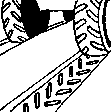
ухудшение физических свойств почв
- Фу: уплотнение
- Фк: растрескивание и коркообразование
- Фз: заболачивание
- Фп: сработка органических горизонтов почв, оседание поверхности
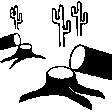
биологическая деградация
- Бр: сокращение растительного покрова
- Бм: утрата местообитаний
- Бк: сокращение количества биомассы
- Бв: потеря природного разнообразия
- Бф: утрата биологической составляющей почв
- Бб: рост числа вредителей/болезней
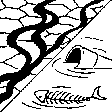
деградация водных ресурсов
- Ва: почвенная засуха
- Вуг: изменения уровня грунтовых вод/ водоносных горизонтов
- Взп: снижение качества поверхностных вод
- Вб: снижение буферной способности водно-болотных угодий
3.8 Предотвращение и снижение деградации земель, или восстановление нарушенных земель
Укажите цель Технологии по отношению к деградации земель :
- снижение деградации земель
- восстановление/ реабилитация нарушенных земель
Пояснения:
This project reduced the land degradation by applying this agroforestry technology.
4. Технические характеристики, мероприятия по практической реализации, вложения и стоимость
4.1 Технический рисунок, иллюстрирующий Технологию
Спецификация (пояснения к техническому рисунку):
Saplings are planted in plotted areas with widths ranging from 4 to 5 meters. The outlines of the plots measure 40 × 50 meters, depending on the land structure. The spacing between saplings is 4 meters, with 5 meters between rows. Alfalfa and legume seeds are planted in the gaps. Small plots of 0.1 hectares were used, each containing 50 saplings.
Автор:
Ahmad Zia Jalalzai
Дата:
16/10/2024
4.2 Общая информация по необходимым вложениям и стоимости
Уточните, как рассчитывались затраты и вложения:
- на площадь, где применяется Технология
Укажите размер и единицу площади:
0.1 ha
Укажите денежные единицы, использованные для подсчета затрат:
- Доллары США
Укажите среднюю дневную заработную плату наемных работников:
5 USD
4.3 Мероприятия, необходимые для начала реализации
| Деятельность | Время (сессия) | |
|---|---|---|
| 1. | Survey and site selection follow by feasibility study | December to January |
| 2. | Procurement sapling and equipment | December and January |
| 3. | Levelling plots, cleaning from weeds | March |
| 4. | Designing layout | March |
| 5. | Digging planting pits | March |
| 6. | Planating apple saplings | spring |
| 7. | Irrigating | April to September |
| 8. | Training and pruning of orchard | October and Noverber |
4.4 Вложения и затраты, необходимые для начала реализации
| Опишите затраты | Единица | Количество | Затраты на единицу | Общая стоимость на единицу | % затрат, оплаченных землепользователями | |
|---|---|---|---|---|---|---|
| Оплата труда | Labour for preparation of plots levelling, digging pits and cleaning weeds | Person/day | 10,0 | 5,0 | 50,0 | 100,0 |
| Оплата труда | Labour for plantation | Person/day | 5,0 | 8,0 | 40,0 | 100,0 |
| Оборудование | Shovel | Number | 1,0 | 4,0 | 4,0 | 100,0 |
| Оборудование | Rope | Meter | 1,0 | 2,0 | 2,0 | 100,0 |
| Оборудование | Hoe | Number | 1,0 | 3,0 | 3,0 | 100,0 |
| Оборудование | Pruning scissors | Number | 1,0 | 10,0 | 10,0 | 100,0 |
| Оборудование | Wheelbarrow | Number | 1,0 | 1,0 | 1,0 | 100,0 |
| Посадочный материал | Alfalfa seeds | Kg | 4,0 | 3,0 | 12,0 | |
| Посадочный материал | Apple sapling | Number | 50,0 | 1,0 | 50,0 | |
| Удобрения и ядохимикаты | DAP | Kg | 25,0 | 3,0 | 75,0 | |
| Удобрения и ядохимикаты | Urea | Kg | 25,0 | 1,0 | 25,0 | |
| Общая стоимость запуска Технологии | 272,0 | |||||
| Общие затраты на создание Технологии в долларах США | 272,0 | |||||
4.5 Поддержание/ текущее обслуживание
| Деятельность | Сроки/ повторяемость проведения | |
|---|---|---|
| 1. | Applying manure for growth of crops and trees(refers to using organic animal waste (such as cow, horse, chicken, or sheep manure) to improve soil fertility and promote plant growth.) | in fall season |
| 2. | Disc ploughing and harrowing | in fall season |
| 3. | Chemical fertilizer application to crops | at the time of observing needs |
| 4. | Pest management with chemicals | in spring season |
| 5. | Irrigation of sapling | As per needed time |
| 6. | Mulching trees (humus cover)refers to the practice of covering the soil around trees with organic material, such as humus, straw, leaves, wood chips, or compost. | In a hot summer and lack of water, dry year |
| 7. | Pruning trees | in spring season |
| 8. | Operation and maintenance | spring, summer and fall |
Пояснения:
Inputs needed for maintenance/ recurrent activities (per year)
4.6 Стоимость поддержания/ текущего обслуживания ( в год)
| Опишите затраты | Единица | Количество | Затраты на единицу | Общая стоимость на единицу | % затрат, оплаченных землепользователями | |
|---|---|---|---|---|---|---|
| Оплата труда | Unskilled labour | Person/day | 20,0 | 5,0 | 100,0 | 100,0 |
| Оплата труда | ploughing | person/day | 2,0 | 5,0 | 10,0 | |
| Оплата труда | apply of fertilizer and manure | person/day | 2,0 | 5,0 | 10,0 | |
| Оплата труда | form pest management | person/day | 3,0 | 5,0 | 15,0 | |
| Оплата труда | planting of annual crops / perennial alfalfa | person/day | 2,0 | 5,0 | 10,0 | |
| Оплата труда | Uprooting dry sapling and replacing to fresh sapling. | Number | 2,0 | 1,0 | 2,0 | 100,0 |
| Оборудование | Shovel | Number | 1,0 | 3,0 | 3,0 | 100,0 |
| Удобрения и ядохимикаты | Organic fertilizer | M3 | 1,0 | 10,0 | 10,0 | 100,0 |
| Удобрения и ядохимикаты | DAP | |||||
| Удобрения и ядохимикаты | Urea | |||||
| Удобрения и ядохимикаты | Pesticides | |||||
| Общая стоимость поддержания Технологии | 160,0 | |||||
| Общие затраты на поддержание Технологии в долларах США | 160,0 | |||||
Пояснения:
After establishment, all responsibilities for maintenance, operations activity, care, and management belongs to land users.
4.7 Наиболее значимые факторы, влияющие на стоимость затрат
Опишите наиболее значимые факторы, влияющие на стоимость затрат:
Usually, the land users are farmers, and all the activities are performed by the land users. The project team provides technical support and capacity building. The most important factors affecting the cost in the project are the materials’ accessibility in the field such as saplings, chemical fertilizer, and pesticides.
5. Природные и социально-экономические условия
5.1 Климат
Среднегодовое количество осадков
- < 250 мм
- 251-500 мм
- 501-750 мм
- 751-1000 мм
- 1001-1500 мм
- 1501-2000 мм
- 2001-3000 мм
- 3001-4000 мм
- > 4000 мм
Агроклиматическая зона
- полузасушливая
5.2 Рельеф
Склоны (преобладающие):
- пологие (0-2%)
- покатые (3-5%)
- покато-крутые (6-10%)
- крутые (11-15%)
- очень крутые (16-30%)
- чрезвычайно крутые (31-60%)
- обрывистые (>60%)
Формы рельефа:
- плато/ равнины
- гребни хребтов/холмов
- склоны гор
- склоны холмов
- подножья
- днища долин
Зона высотной поясности:
- 0-100 м над уровнем моря
- 101-500 м н.у.м.
- 501-1000 м н.у.м.
- 1001-1500 м н.у.м.
- 1501-2000 м н.у.м.
- 2001-2500 м н.у.м.
- 2501-3000 м н.у.м.
- 3001-4000 м н.у.м.
- > 4 тыс. м н.у.м.
Комментарии и дополнительные сведения по условиям рельефа/ топографии :
As the technology have been applied in a 400 different topography plots, some of the plots are in a flatted, gentle and hilly slop and most of the technologies are applied in flatted area.
5.3 Почвы
Средняя мощность почв:
- поверхностные (0-20 см)
- неглубокие (21-50 см)
- умеренно глубокие (51-80 см)
- глубокие (81-120 см)
- очень глубокие (> 120 см)
Гранулометрический состав (верхнего горизонта):
- средние фракции (суглинистый, супесчаный)
Гранулометрический состав (на глубине более 20 см):
- средние фракции (суглинистый, супесчаный)
Содержание органического вещества в верхнем горизонте:
- среднее (1-3%)
Если возможно, приложите полное описание почв или укажите доступную информацию, например тип почв, рH/ кислотность почв, ёмкость катионного обмена, содержание азота, содержание солей и т.д.
In Ghazni province, the primary soil types include Aridisols in arid regions, Entisols on slopes, Sierozems in desert areas, and fertile Alluvial soils in valleys that support agriculture. Soil pH levels in the region range from 6.33 (slightly acidic) to 8.52 (alkaline), indicating varying degrees of acidity and alkalinity. The Cation Exchange Capacity (CEC), nitrogen levels, and salinity vary across these soil types, influencing agricultural productivity and land management practices. For more detailed information, including specific nutrient content and soil characteristics, resources such as the FAO’s Agro-Climatic Atlas can be consulted.
5.4 Доступность и качество воды
Уровень грунтовых вод:
5-50 м
Доступность поверхностных вод:
избыток
Качество воды (без обработки):
питьевая вода хорошего качества
Качество воды относится к:
одновременно грунтовые и поверхностные воды
Является ли солёность воды проблемой?
Нет
Происходят ли периодические затопления территории?
Да
Регулярность:
эпизодически
Комментарии и дополнительная информация по качеству и количеству воды:
In years with heavy snowfall, water availability increases, and springs are replenished. Conversely, during drought years, water resources decrease significantly. From July to September, a water shortage is commonly experienced, prompting farmers to transport water from canals using animals. Additionally, some farmers rely on groundwater specifically for irrigating saplings. This seasonal variation in water supply is critical for agricultural practices in the province.
5.5 Биоразнообразие
Видовое разнообразие:
- средняя
Разнообразие местообитаний:
- средняя
5.6 Характеристика землепользователей, применяющих Технологию
Осёдлый или кочевой:
- Осёдлый
Рыночная ориентация производства:
- смешанный (натуральный / коммерческий)
Доходы из других источников:
- 10-50% всех доходов
Относительный уровень достатка:
- очень плохой
- плохой
Индивидуальное или коллективное хозяйство:
- частное/ домовладение
Уровень механизации:
- ручной труд
Пол:
- женщины
- мужчины
Возраст землепользователей:
- средний возраст
- пожилой
5.7 Средняя площадь земель, используемых землепользователями с применением Технологии
- < 0,5 га
- 0,5-1 га
- 1-2 га
- 2-5 га
- 5-15 га
- 15-50 га
- 50-100 га
- 100-500 га
- 500-1000 га
- 1000-10000 га
- > 10000 га
Считается ли это мелким, средним или крупным хозяйством (по местным масштабам)?
- среднего размера
Пояснения:
Everyone individually has possessed land ranging from 0.5 hectares to 2 hectares in communities. However, land users has allocated only 0.1 hectares of land for the application of this technology.
5.8 Собственность на землю, права на земле- и водопользование
Землевладелец:
- общинная/ поселковая
- индивидуальная, оформленная в собственность
Право землепользования:
- общинное (контролируемое)
- индивидуальное
Право водопользования:
- неограниченное (неконтролируемое)
- общинное (контролируемое)
Права на землепользование основаны на традиционной правовой системе?
Да
Поясните:
The traditional system refers to a record that recognizes land ownership and is issued based on the customs and traditions of local communities. This document is not legal but is used within the community to validate ownership.
Пояснения:
The land in this area is privately owned, while the rangeland is government-owned and accessible for public use. However, some individuals have encroached the rangeland, converting it into agricultural land and claiming it as their own property, despite lacking legal ownership documentation.
5.9 Доступ к базовым услугам и инфраструктуре
медицинское обслуживание:
- плохой
- средний
- хорошая
образование:
- плохой
- средний
- хорошая
технические консультации:
- плохой
- средний
- хорошая
занятость (вне хозяйства):
- плохой
- средний
- хорошая
рынки:
- плохой
- средний
- хорошая
электроснабжение:
- плохой
- средний
- хорошая
транспорт и дорожная сеть:
- плохой
- средний
- хорошая
водоснабжение и канализация:
- плохой
- средний
- хорошая
финансовые услуги:
- плохой
- средний
- хорошая
6. Воздействия и заключительные положения
6.1 Влияние Технологии УЗП в пределах территории ее применения
Социально-экономическое воздействие
Продуктивность
производство сельскозяйственных культур
Количество до применения УЗП :
0
Количество после применения УЗП:
Now we have 400 apple orchards
Комментарий/ пояснения:
In the past, there were no apple orchard in this area. The community mostly relied on the rangeland, and the animal feed was limited then. Due to the application of these technologies, the apple orchard has increased, and alfalfa intercrops have been expanded for animal feeding. As a result, pressure on the rangeland has decreased.
качество урожая
Количество до применения УЗП :
less then 10 orchard. No alfaalf crops
Количество после применения УЗП:
400 orchards with Alfaalfa crops
Комментарий/ пояснения:
Alfalfa intercrops have become friendly feeds for animals, along with other grasses harvested from the rangeland.
производство кормов
Количество до применения УЗП :
less then 10 plots of Alfaalfa
Количество после применения УЗП:
400 plots
качество кормов
Комментарий/ пояснения:
Crops production specifically grown to feed livestock. It plays a crucial role in ensuring a steady supply of nutritious feed for animals, especially in dairy and meat production systems.
производство продуктов животноводства
Доступность и качество воды
доступность воды для скота
качество воды для скота
доступность оросительных вод
Доходы и затраты
доходы хозяйства
Количество до применения УЗП :
It is not distinguishable for now
Количество после применения УЗП:
It is not distinguishable for now
Комментарий/ пояснения:
The cultivation of apple orchards and alfalfa crops has significant environmental, economic, and agricultural benefits. When grown together in an agroforestry system, they create a sustainable and productive farming model.
Другое социально-экономическое воздействие
The cultivation of apple orchards and alfalfa crops has significant environmental, economic, and agricultural benefits. When grown together in an agroforestry system, they create a sustainable and productive farming model.
Количество до применения УЗП :
It is not distinguishable for now
Количество после применения УЗП:
It is not distinguishable for now
Комментарий/ пояснения:
The cultivation of apple orchards and alfalfa crops has significant social benefits, contributing to rural development, employment, food security, and community well-being.
Социальное и культурное воздействие
продовольственная безопасность/ самообеспечение
Количество до применения УЗП :
less then 10 orchard
Количество после применения УЗП:
400
Комментарий/ пояснения:
Food security is achieved when people have consistent access to sufficient, safe, and nutritious food to maintain a healthy life. The cultivation of apple orchards and alfalfa crops plays a crucial role in enhancing food security by ensuring the availability of fruits, livestock feed, and sustainable agricultural income.
состояние здоровья
Количество до применения УЗП :
less then 10 orchard
Количество после применения УЗП:
400 orchard
Комментарий/ пояснения:
The cultivation of apple orchards and alfalfa crops has a direct and indirect impact on human and animal health. These crops provide essential nutrients, improve environmental conditions, and contribute to sustainable food systems that enhance overall well-being.
возможности отдыха и рекреации
Количество до применения УЗП :
less then 10 orchard
Количество после применения УЗП:
400
Комментарий/ пояснения:
The cultivation of apple orchards and alfalfa crops not only provides food and economic benefits but also creates various recreational opportunities. These activities promote tourism, community engagement, and overall well-being, contributing to rural development and environmental appreciation.
знания в области УЗП/ деградации земель
Комментарий/ пояснения:
The cultivation of apple orchards and alfalfa crops plays a significant role in Sustainable Land Management (SLM) by improving soil health, preventing degradation, and enhancing ecosystem services. Properly managed apple orchards and alfalfa fields help restore land fertility, prevent erosion, and support long-term agricultural sustainability.
Экологическое воздействие
Почвы
влажность почв
Комментарий/ пояснения:
The cultivation of apple orchards and alfalfa crops has significant effects on soil moisture due to their respective water demands, root systems, and overall impact on the surrounding ecosystem. Both crops, when properly managed, can help retain moisture in the soil and improve its structure, but if mismanaged, they can also lead to issues like water depletion or soil erosion.
почвенный покров
Комментарий/ пояснения:
The cultivation of apple orchards and alfalfa crops can have significant effects on soil cover, which plays a crucial role in protecting the soil from erosion, enhancing water retention, and promoting overall soil health. Proper management of soil cover is essential for ensuring sustainable agricultural practices and maintaining soil fertility over time.
почвенное / подземное органическое вещество/ углерод
Комментарий/ пояснения:
The cultivation of apple orchards and alfalfa crops plays a significant role in the accumulation and dynamics of soil organic matter (SOM) and below-ground carbon (C). Both of these components are essential for soil fertility, carbon sequestration, and overall ecosystem health. The management of these factors has critical implications for sustainable farming practices, climate change mitigation, and long-term soil productivity.
Биоразнообразие: растительность, животный мир
полезные виды
Климат и снижение риска стихийных бедствий
последствия наводнений
Комментарий/ пояснения:
Floods are one of the most significant climate-related risks that can affect agricultural systems, particularly in regions prone to heavy rainfall or where irrigation infrastructure is inadequate. Both apple orchards and alfalfa crops are vulnerable to flood impacts, which can result in loss of yield, soil degradation, and cause damage to the overall ecosystem. However, with effective disaster risk reduction strategies, the negative impacts of floods on these crops can be mitigated.
влияние засух
Комментарий/ пояснения:
apple orchards and alfalfa crops are highly sensitive to water stress, and prolonged drought conditions can reduce crop yields, degrade soil quality, and negatively affect the overall health of these plants. Understanding the impacts of drought on these crops and implementing appropriate water management strategies are crucial for maintaining agricultural productivity in drought-prone areas.
6.2 Влияние Технологии за пределами территории ее применения
доступность воды
Комментарий/ пояснения:
The cultivation of apple orchards and alfalfa crops, especially when enhanced by technology, can have significant off-site impacts on water availability. These impacts stem from how irrigation systems, water management practices, and agricultural technologies influence local and regional water resources, hydrology, and ecosystems. Off-site effects include changes to water quality, water use efficiency, and the sustainability of water resources in surrounding areas.
6.3 Подверженность и чувствительность Технологии УЗП к постепенным изменениям климата и экстремальным погодным явлениям/ стихийным бедствиям, связанным с изменением климата (в понимании землепользователей)
Пояснения:
The cultivation of apple orchards and alfalfa crops is highly sensitive to both gradual climate change and climate-related extremes like floods, droughts, and temperature fluctuations. These climate impacts affect not only the crops' growth and yield but also the technologies used in managing these crops. Understanding the exposure and sensitivity of these agricultural technologies to such climate factors is crucial for farmers and land users to ensure long-term sustainability.
6.4 Анализ эффективности затрат
Насколько получаемый результат сопоставим с первоначальными вложениями (с точки зрения землепользователей)?
Эффективность затрат в краткосрочной перспективе:
влияние незаметно
Эффективность затрат в долгосрочной перспективе:
очень позитивное
Насколько получаемый результат сопоставим с текущими расходами по поддержанию технологии (с точки зрения землепользователей)?
Эффективность затрат в краткосрочной перспективе:
влияние незаметно
Эффективность затрат в долгосрочной перспективе:
позитивное
Пояснения:
Before the project was implemented, the land was either used for wheat cultivation or left fallow. With the introduction of the agroforestry project, tree seedlings were planted, and alfalfa was grown. In some plots, legumes were cultivated instead of alfalfa. In the first year, the production of alfalfa and legumes significantly outpaced the wheat yield, resulting in high levels of satisfaction and happiness among the local communities.
6.5 Внедрение Технологии
- 1-10%
Среди применяющих Технологию землепользователей, какова доля лиц, применяющих её по собственной инициативе, т.е. без какого-либо материального стимулирования со стороны?
- 11-50%
Пояснения:
In addition to the 400 gardens established through the project, local communities independently created 50 small and large gardens without any financial assistance. They purchased saplings from the market and, having previously received capacity-building training from the project team, applied agroforestry practices on plots of various sizes, tailored to their available land.
6.6 Адаптация
Была ли Технология УЗП изменена в недавнее время с целью адаптации к меняющимся условиям среды?
Нет
6.7 Сильные стороны/ преимущества/ возможности Технологии
| Сильные стороны/ преимущества/ возможности по мнению землепользователей |
|---|
| Integrated systems that combine apple trees with alfalfa and legumes offer several benefits. Farmers appreciated the enhanced biodiversity, which supports pest control and improves pollination, leading to healthier crops and increased yields. The intercropping of legumes is particularly valued for its role in improving soil fertility through nitrogen fixation, reducing dependence on synthetic fertilizers, and promoting sustainable farming practices. |
| Economically, farmers find that this system provides diversified income sources, as they can sell both fruit and forage crops, which mitigates risks associated with crop failure. Additionally, the ability to optimize land use while maintaining ecological balance is a significant advantage. This resource efficiency, coupled with the adaptability of practices to different climates and soils, enables farmers to achieve resilience against climate variability. |
| Furthermore, land users recognize the opportunities for community engagement and knowledge sharing to promotes agroforestry. As these systems gain popularity, farmers are increasingly accessing markets for sustainably produced goods, enhancing their profitability. With supportive policies of sustainable land management, the future of agroforestry initiatives appears promising, benefiting both the environment and local economies. |
| Сильные стороны/ преимущества/ возможности по мнению составителя или других ключевых специалистов |
|---|
| Integrated systems of apple trees intercropped with alfalfa and legumes are recognized for their multifaceted benefits. They highlight the importance of these systems in promoting sustainable agricultural practices, noting that the biodiversity fostered by agroforestry enhances pest control and supports healthier ecosystems. This ecological balance is crucial not only for soil health but also for mitigating the reliance on chemical inputs, which aligns with global sustainability goals (Nair, 2019; FAO, 2020). |
| Moreover, compilers emphasize the economic advantages of agroforestry. By diversifying income streams, these systems reduce financial risks for farmers and stabilize local economies. The adaptability of agroforestry practices to various climates and soil types allows for broader implementation, making it an attractive option for diverse agricultural settings (Schroth et al., 2004; Somarriba et al., 2016). |
| Key resource persons also note the social dimension of agroforestry, as these systems encourage community engagement and collaboration. This participatory technology fosters knowledge sharing, leading to improved agricultural practices and strengthening local capacities. With increasing support from policies advocating for sustainable land management, agroforestry initiatives are well-positioned for growth and development, contributing to both environmental health and economic resilience (Pretty, 2018; Wang et al., 2020). |
6.8 Слабые стороны/ недостатки/ риски Технологии и пути их преодоления
| Слабые стороны/ недостатки/ риски по мнению землепользователей | Возможные пути их преодоления/снижения? |
|---|---|
| Initial costs and investment risks | The project team provided seedlings, fertilizers, and Alfalfa seeds at the start of the technology. Land users were responsible for carrying out physical activities such as digging holes, planting seedlings, and irrigation, which helps reduce costs and fosters a sense of ownership among the participants. |
| Low knowledge of the technology and skill gaps | To address educational gaps, the project’s field team conducted capacity-building programs and workshops before implementing the technology. This initiative has enabled land users to become familiar with new methods and enhance their capabilities in agroforestry |
| Market access and economic viability | The project team established agroforestry committees and facilitated direct market communication and improved access for land users to sell their produce. It has provided sales skills training to land users, allowing them to make more profit from their produce |
| 4) Pest and disease management: | 4) The project's field team has educated land users about common pests and diseases in the area and provided them with preventive management strategies. In case of new issues, they have been linked with the Department of Agriculture to ensure timely and effective support. |
| Слабые стороны/ недостатки/ риски по мнению составителя или ответственных специалистов | Возможные пути их преодоления/снижения? |
|---|---|
| Provision of Resources and Local Engagement: | Importance of equipping land users with essential materials, such as sapling and fertilizers, to lower initial barriers and encourage participation. Enhance ownership to ensure sustainability when the project pulls out |
| Addressing educational gaps | Realizing that knowledge gaps could hinder the project’s success, the team implemented pre-launch training workshops. These sessions were aimed at familiarizing land users with innovative agroforestry, helping to ensure their understanding and effective implementation of new techniques. |
| Market connections and economic benefits | Key resource personnel highlighted the importance of establishing market access for sustainable success. By Rangeland management Association and offering training in market engagement, the project helped land users gain market literacy, empowering them to maximize income potential from their produce. |
| Support for pest and disease management | The project team prioritized proactive pest and disease management by training land users in common pest prevention techniques. The creation of a support network with the Department of Agriculture ensures that land users have access to timely guidance for any emerging issues, ensuring resilience and adaptability in their practices. |
7. Справочные материалы и ссылки
7.1 Методы сбора/ источники информации
- выезды на места, полевые обследования
Field visits and field surveys by project team
- опросы землепользователей
About one per agroforestry plot by project team
- опросы специалистов/экспертов по УЗП
Three people - project implementation unit.
- данные, собранные из отчетов и достоверных документов
Field reports and documents.
Когда были собраны данные (на местах)?
16/12/2024
Ссылки и модули
Развернуть все Свернуть всеСсылки
Нет ссылок
Модули
Нет модулей


